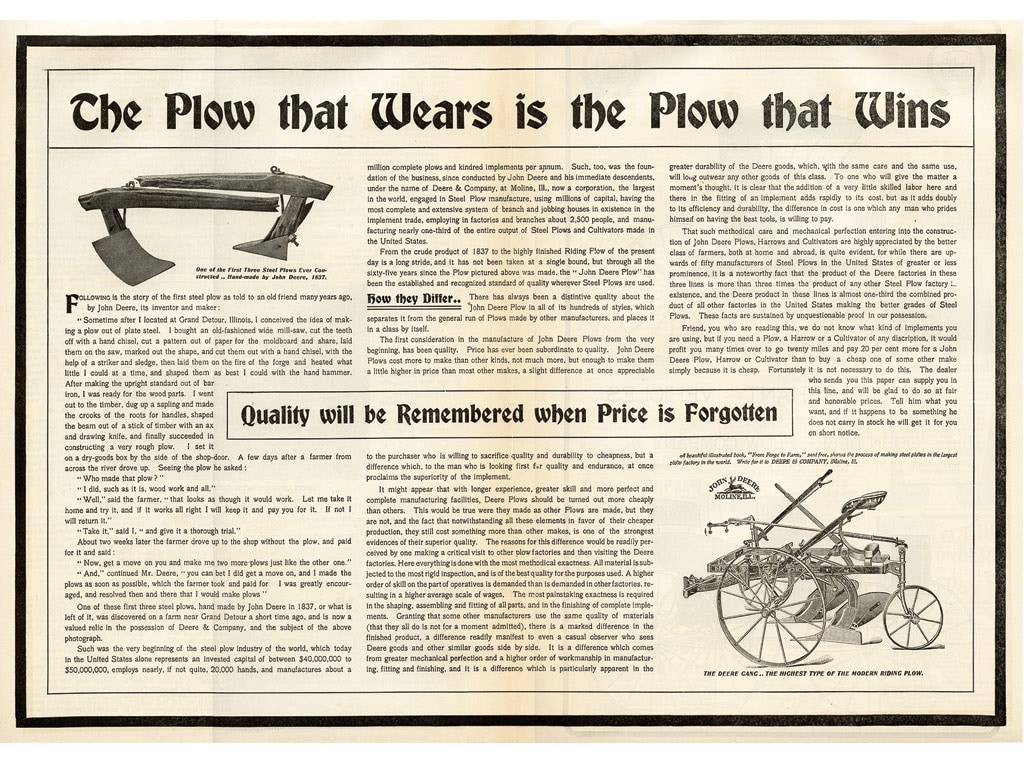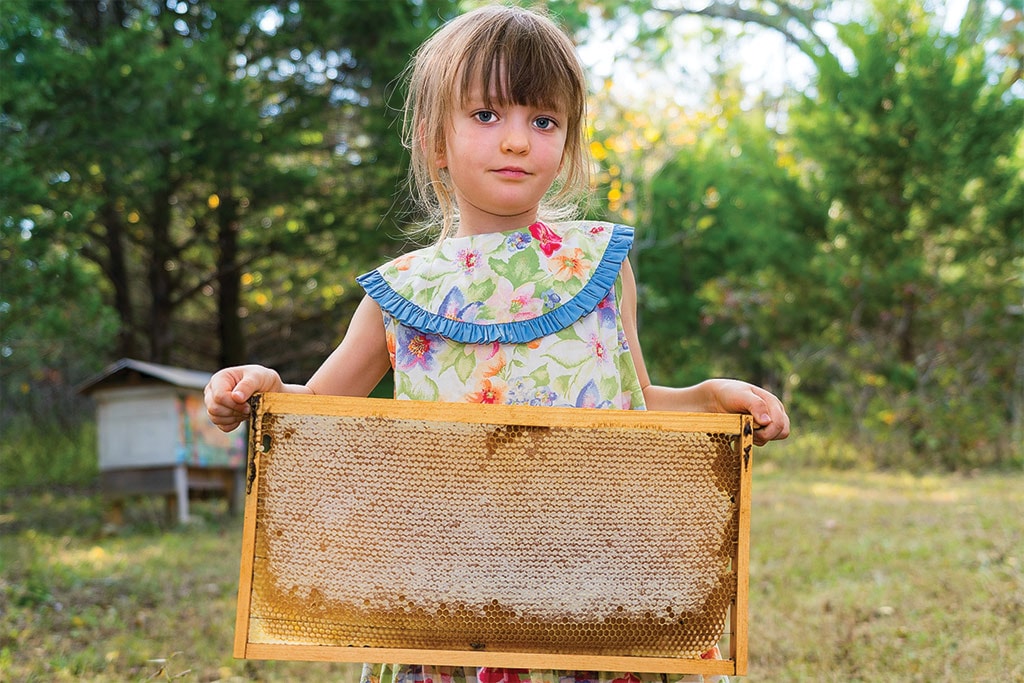
The regenerative approach hopes to improve the soil, heal the planet, and perhaps impact human health.
Agriculture January 01, 2021
A Time For Renewal
Regenerative farming and the revival of agricultural spirit.
Abraham Lincoln and John Deere were both obsessed with plows. John Deere, of course, wanted to put together polished steel with just the right moldboard shape to allow farmers to turn over the virgin prairie in what was to become known in the U.S. as the Corn Belt. And Abraham Lincoln, caught up in the spirit of the Industrial Revolution that fueled the growth of the new republic, desperately wanted someone to invent a steam-powered plow to expediently turn the tallgrass prairie into productive farmland.
One of the highlights of my career, as I look back across my 23 years of writing for The Furrow, was the chance to become acquainted with Lincoln’s genius as officials allowed me to go “behind the ropes” at the presidential museum and library in Springfield, Ill. I was researching a story called Abe Lincoln Farmed Here, about his legacy in establishing everything from the U.S. Department of Agriculture to the Morrill Act that established the land-grant university system. I was bemused by Lincoln’s fascination with the concept of a steam-powered plow—he had even scribbled out calculations as to how many cords of wood a farmer would have to stack along the end of a field in order to maintain the huffing device.
It was only later that the picture snapped into focus in my mind. In harmony with 19th century thinking, Lincoln saw the prairie as a vast, untapped resource to be exploited. Pioneers could produce more than enough to feed the nation, and the excess could be sent down the mighty river system in the nation’s heartland. Lincoln, who himself has worked on flatboats delivering farm goods to New Orleans, knew that these farm exports could bring hard currency back to the U.S., where it could fuel the nation’s growth.
Lincoln was ahead of his time. For all practical purposes, he was calling for fencerow-to-fencerow farming even before there were any fences in the territory. His dream of a steam-powered plow never materialized; his dream of plowing the prairie, however, was fulfilled. In Illinois, Indiana, and Iowa, the three “I” states that make up the heart of the Corn Belt, only one-tenth of one percent of the original prairie remains intact.
Time to heal. John Deere’s magazine, The Furrow, was established in 1895, just after the close of the U.S. frontier. During the past 125 years, the majority of our stories focused on Lincoln’s dream—how to squeeze another bushel of yield from the land.
In recent years, however, you are seeing a different type of story—a story from farmers who believe it is time to restore, renew, and regenerate some of the gifts that came from the nation’s soils.
My interest in soil health was piqued on a hot day along the James River in Virginia when Ray Archuleta gave a fiery presentation on how vitality could be restored to the soil resource. During his 30-year tenure with the Natural Resources Conservation Service, Archuleta delivered that message all across the country.
Carbon connection. Conservation has been used a couple of times in the past century as a mechanism to tap the brakes on overproduction of ag commodities. The New Deal idled land to deal with the Dust Bowl environmental concerns as well as Depression-era prices; the Conservation Reserve Program idled land, simultaneously slowing soil erosion and helping reduce burdensome amounts of grain stocks.
But what Archuleta and his proteges introduced was a paradigm shift—using a combination of practices, from reduced tillage to nutrient management, cover crops to compost applications, to stimulate the world of microorganisms under the soil surface.
The idea was not so much to protect soil from washing away—although that’s still an important task—but to actually restore the magic that allowed the virgin soils to be so productive with so few purchased inputs. Soil health is a complex issue, but the first step in restoring the magic is to restore the organic matter mined from the soil by commodity crops.
For simple folks like myself, another word for organic matter is soil carbon. And carbon might just be the one element that drives the story of agriculture over the next 125 years or so.
There’s plenty of carbon in the atmosphere these days. Recorded levels of carbon dioxide now exceed 400 ppm, a level that scientists say the world has not seen in more than 400,000 years. It’s this rise in atmospheric carbon that is behind the forecasts of climate change, perhaps even catastrophic climate change, if it continues.
There’s a growing number of studies suggesting that farmers could stem carbon concerns by harvesting it, through a variety of regenerative practices, and storing it in the soil. A recent study found that a coordinated effort by the world’s farmers to apply regenerative practices on cropland as well as pasture would bio-sequester 20 billion tons of carbon annually. That’s more than enough to offset today’s carbon emissions. If the world can find a way to compensate farmers for ecological services in addition to crop yield, the climate solution will be soon to follow. And soils would be restored in the process.
Human touch. Perhaps nothing is more needed in these days of global pandemic than a boost to the spirit of agriculture itself. Helping to solve the carbon issue would certainly boost the standing of farmers in the public eye.
There’s another aspect of regenerative agriculture that hints at a human connection. It’s an idea championed by a former University of Missouri soil scientist, the late William Albrecht.
He had passed away just before I began my studies on the Columbia campus in the 1970s. This eccentric scholar had proposed a major initiative on soil health following the end of World War II, encouraging farmers to rebuild organic matter, not simply add more fertilizer. His Albrecht Doctrine suggests that the health of a nation’s soils directly impacts the health of its people.
It may take 50 years to prove that link. But, if true, it opens the door for farmers to be paid for the quality as well as the quantity of their production. And that may be farming’s next frontier.
Read More

Agriculture
Plowing A Straight Furrow
For 125 years, The Furrow has been documenting the ebb and flow of farm life.

Agriculture
Faces of The Furrow
For 125 years, The Furrow has told the story of agriculture, and the stories of agriculture.
